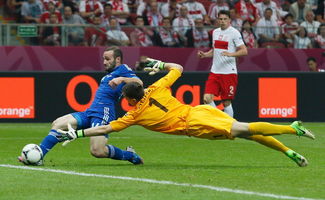In European football, defensive tactics play a crucial role in determining the outcome of matches, especially in highstakes tournaments like the UEFA European Championship, commonly known as the Euros. Coaches often devise various strategies to nullify the attacking threat posed by their opponents while maintaining a solid defensive structure. Let's delve into some of the key defensive tactics employed in the Euros:
Manmarking involves assigning a defender to closely track and mark an opponent player throughout the game, denying them space and time on the ball. This tactic is particularly effective against key playmakers or prolific goal scorers. However, manmarking requires exceptional individual defensive skills and can leave gaps elsewhere if not executed properly.
Zonal marking involves dividing the defensive area into zones, with each defender responsible for covering a specific zone rather than marking individual players. This tactic allows defenders to maintain their positions and cover spaces effectively, making it harder for opponents to find gaps. Zonal marking is often preferred for setpiece defending, where players need to defend specific areas rather than marking specific opponents.
Pressing is a highintensity defensive tactic aimed at putting pressure on the opponent when they are in possession of the ball, usually in their own half. Players work together to close down space, force mistakes, and regain possession quickly. Pressing requires coordination, fitness, and discipline from the entire team and is often used to disrupt the opponent's buildup play and create scoring opportunities through turnovers.
Counterattacking is a defensive strategy where a team quickly transitions from defense to attack, exploiting the space left by the opponent's advancing players. This tactic relies on quick passing, pacey forwards, and intelligent movement to catch the opposition off guard. Effective counterattacking requires solid defensive organization to win the ball back and swift transitions to capitalize on attacking opportunities.
"Parking the bus" is a defensive tactic where a team adopts an ultradefensive approach, with the majority of players behind the ball and focused on denying space in their own half. This tactic is often employed by underdog teams facing superior opponents or by teams protecting a narrow lead late in the game. While effective in frustrating opponents and preserving a result, parking the bus can invite sustained pressure and limit attacking opportunities.
The sweeperkeeper is a goalkeeper who actively participates in defensive play outside the penalty area, sweeping up long balls or acting as a sweeper behind the defensive line. This tactic allows the team to play a high defensive line, compressing space and reducing the time for opponents to exploit gaps behind the defense. A sweeperkeeper requires excellent decisionmaking and ballplaying skills to effectively support the defense.

In conclusion, defensive tactics in European football are diverse and adaptable, with coaches constantly innovating to counter evolving attacking strategies. The effectiveness of a defensive tactic depends on various factors such as the quality of players, the opponent's playing style, and the game situation. A balanced defensive approach that combines elements of manmarking, zonal marking, pressing, and counterattacking can provide teams with the flexibility needed to succeed in the Euros and other elite competitions.